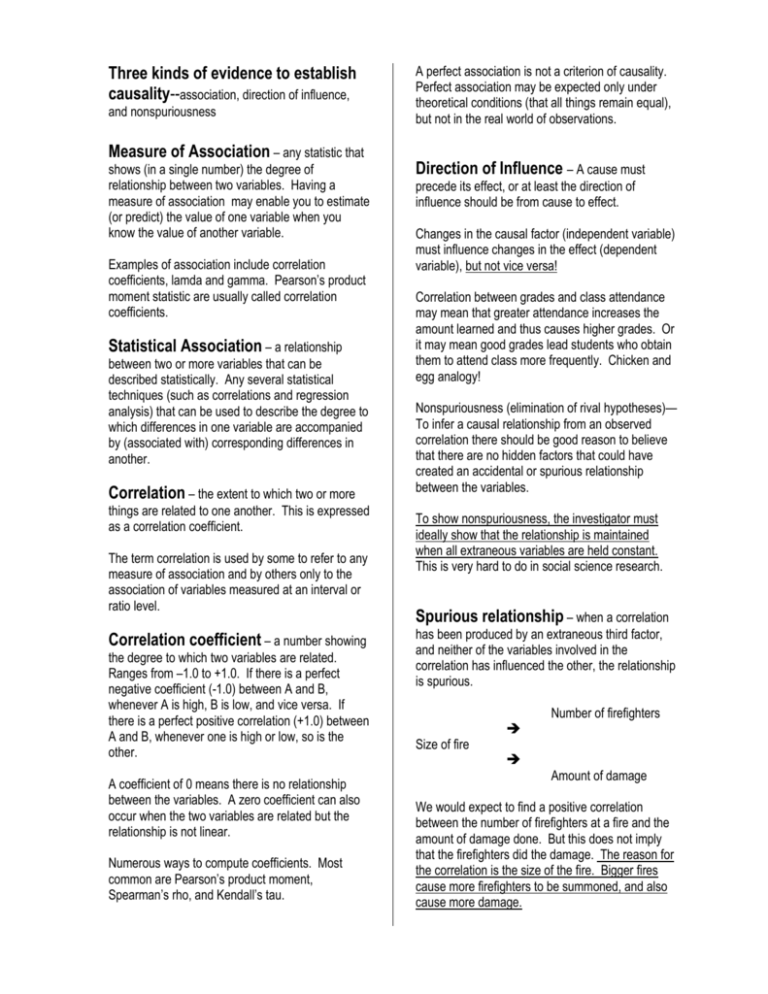
The authors analyzed focus group data from 20 youth at a homeless shelter.
#HOW TO ESTABLISH CAUSALITY HOW TO#
In another inductive study, Kristin Ferguson and colleagues (Ferguson, Kim, & McCoy, 2011) analyzed empirical data to better understand how to meet the needs of young people who are homeless. Note how this study began with the data-men’s narratives of learning about menstruation-and worked to develop a theory. They conclude that sisters play an important role in boys’ early understanding of menstruation, that menstruation makes boys feel somewhat separated from girls, and that as they enter young adulthood and form romantic relationships, young men develop more mature attitudes about menstruation. By looking for patterns across all 23 cisgender men’s narratives, the researchers were able to develop a general theory of how boys and young men learn about this aspect of girls’ and women’s biology. To understand this process, Allen and her colleagues analyzed the written narratives of 23 young cisgender men in which the men described how they learned about menstruation, what they thought of it when they first learned about it, and what they think of it now. One fascinating study in which the researchers took an inductive approach is Katherine Allen, Christine Kaestle, and Abbie Goldberg’s (2011) study of how boys and young men learn about menstruation. There are many good examples of inductive research, but we’ll look at just a few here. Figure 8.1 outlines the steps involved with an inductive approach to research. In other words, they move from data to theory, or from the specific to the general. Thus, when researchers take an inductive approach, they start with a particular set of observations and move to a more general set of propositions about those experiences. At this stage, the researcher looks for patterns in the data, working to develop a theory that could explain those patterns. Once a substantial amount of data have been collected, the researcher will then step back from data collection to get a bird’s eye view of their data. Inductive reasoningĪ researcher using inductive reasoningno post begins by collecting data that is relevant to their topic of interest. Then we’ll move on to thinking about how they complement one another. Let’s start by looking at each one and how they differ from one another. While inductive and deductive approaches to research are quite different, they can also be complementary.

But the relationship between theory and research differs for each approach. The reciprocal relationship between theory and research often becomes evident to students when they consider the relationships between theory and research in inductive and deductive approaches to research.


The converse is also true: research can structure and inform theory. Theories structure and inform social work research. If you don’t have a good idea about those at this point, it may be a good opportunity to pause and read more about the theories related to your topic area. However, you should have a good sense of what theory or theories will be relevant to your project, as well as how this theory, along with your working question, fit within the three broad research paradigms we reviewed. Rest assured, you do not need to become a theorist or philosopher to be an effective social worker or researcher. I even had one student who said she got frustrated just reading the word “philosophy.” My experience has been that many students have a difficult time thinking about theories and paradigms because they perceive them as “intangible” and thereby hard to connect to social work research.

Identify how inductive and deductive reasoning are complementaryĬongratulations! You survived the chapter on theories and paradigms.Describe inductive and deductive reasoning and provide examples of each.


 0 kommentar(er)
0 kommentar(er)
